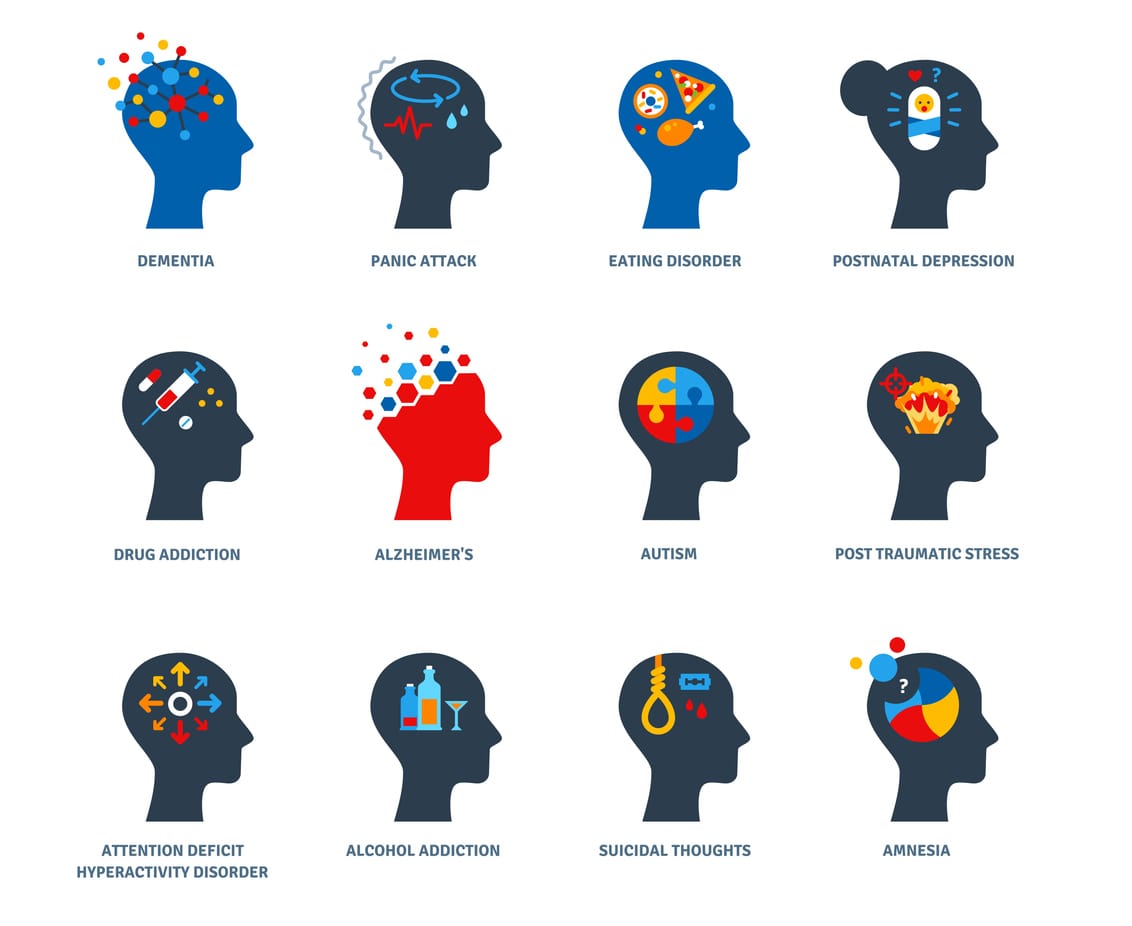
MENTAL DISORDERS
The Diagnostic and Statistical Manual of Mental Disorders, fifth edition, also known as DSM-5, is the handbook currently used by U.S. behavioral and mental healthcare professionals to make diagnoses. The DSM is often referred to as the “bible” of the mental healthcare field, providing descriptions and classifications of mental disorders, including their symptoms and other criteria required for diagnosis. According to DSM-5:
A mental disorder is a syndrome characterized by clinically significant disturbance in an individual’s cognition, emotion regulation, or behavior that reflects a dysfunction in the psychological, biological, or developmental processes underlying mental functioning. Mental disorders are usually associated with significant distress or disability in social, occupational, or other important activities…
(Source: Mental Disorder—The Need for an Accurate Definition, Diogo Telles-Correia, Sérgio Saraiva, Jorge Gonçalves
Front Psychiatry. 2018; 9: 64. Published online 2018 Mar 12. doi: 10.3389/fpsyt.2018.00064. Accessed 3.23.2021 from https://www.ncbi.nlm.nih.gov/pmc/articles/PMC5857571/
Mental disorders (also called psychological disorders) are patterns of behavioral or psychological symptoms that impact multiple areas of life. These disorders create distress for the person experiencing the symptoms. They can cause disruptions in daily functioning, relationships, work, school, and other important domains. Some of the major categories of mental disorders described in DSM-V are:
[Source: Adapted from A List of Psychological Disorders by Kendra Cherry, Medically reviewed by Steven Gans, MD; updated on March 19, 2020. Retrieved on 3.23.2021 from
https://www.verywellmind.com/a-list-of-psychological-disorders-2794776.)
